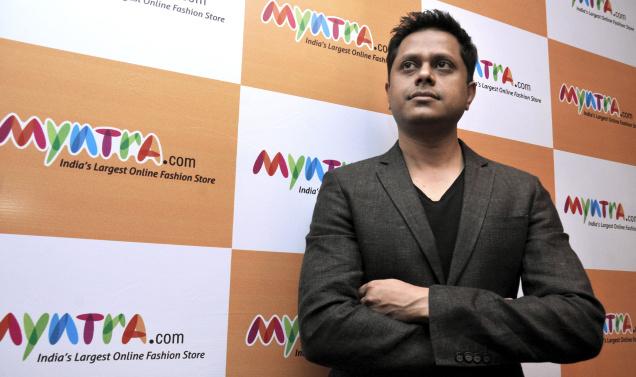There's a business opportunity gleaming in the Indian market, perfectly ripe for ecommerce disruption.
According to a study by Morgan Stanley, online shopper penetration in India is set to increase from 9% in 2013 to 36% by 2020, primarily led by mobile users. The e-retail market in India is also expected to rise from US$5 billion in 2015 to over US$130 billion by 2025.
It is in this expansive motion that Myntra is hoping to gain from the first-mover advantage by taking its website to a mobile app-only state.
The Indian E-Commerce Giant is currently the third largest e-commerce website in the Indian market after being acquired by Flipkart in 2014. After its conception as an online personalized gift portal, Myntra grew from a company which sold 15 gift items, such as mugs, watches, calendars, glasses, etc. to now featuring more than 500 brands and 60,000 products.

Here are 3 things they seem to be doing right, which other e-retailers across the world should probably take note of:
-
Know thy customer
Since its beginnings, Myntra’s sales have jumped from a humble Rs 67.1 crore (US$11 million) in 2011-12 to a jaw-dropping Rs 441 crore (US$73.5 million) in 2013-14. This translates into phenomenal growth of 558% over a three-year period.
And at the heart of its growth are mobile customers.
The company stated that 95 percent of its traffic comes through mobile, which also accounts for 70% of its total revenues. Some 9 million users have downloaded the app and the company hopes to increase that by 5 million over the next three to four months.
-
Innovate
Other than their bold move to the mobile-only platform, Myntra recently acquired startups Fittiquette and Native5 for an undisclosed sum with the intent of enhancing Myntra's app experience.
Shamik Sharma, Chief Technology and Product Officer at Myntra explained:
"When we talk mobile experiences it is the power to take a selfie, post it on the app, and use data analytics to suggest the right fashion."
-
Develop the market
The Myntra team is currently investing about 8-10% of sales in brand promotion to develop their market with a focus on tier 2 cities to deepen their presence in the space.
Mukesh Bansal, Chief of Mobile Commerce at Myntra who is also on the board of Flipkart, said:
“The value proposition is to build a US$5 billion business around the app in five years and we will get to profitability in two years."
Leading online stores such as Indiatimes, Jabong and Myntra say that almost half -- and in some cases more than half --- of their sales now come from tier 2 and tier 3 towns and cities.
A recent study by Google India also backs the sentiment, revealing that 51% of traffic for the its Great Online Shopping Festival held last December came from outside the top four metros, and predicts that online shopping will grow exponentially in tier 2 and tier 3 cities due to rise in the middle class.

Conclusion
So is this a bold forward-thinking move or is Myntra taking too much of a risk?
There is no easy answer, but Myntra appears to be keeping a close eye on their target consumer and adapting accordingly will certainly help in its ambition to enter new markets and grow. The process isn’t likely to be seamless and will take time, but in this case, they might just gain from the first mover advantage.
